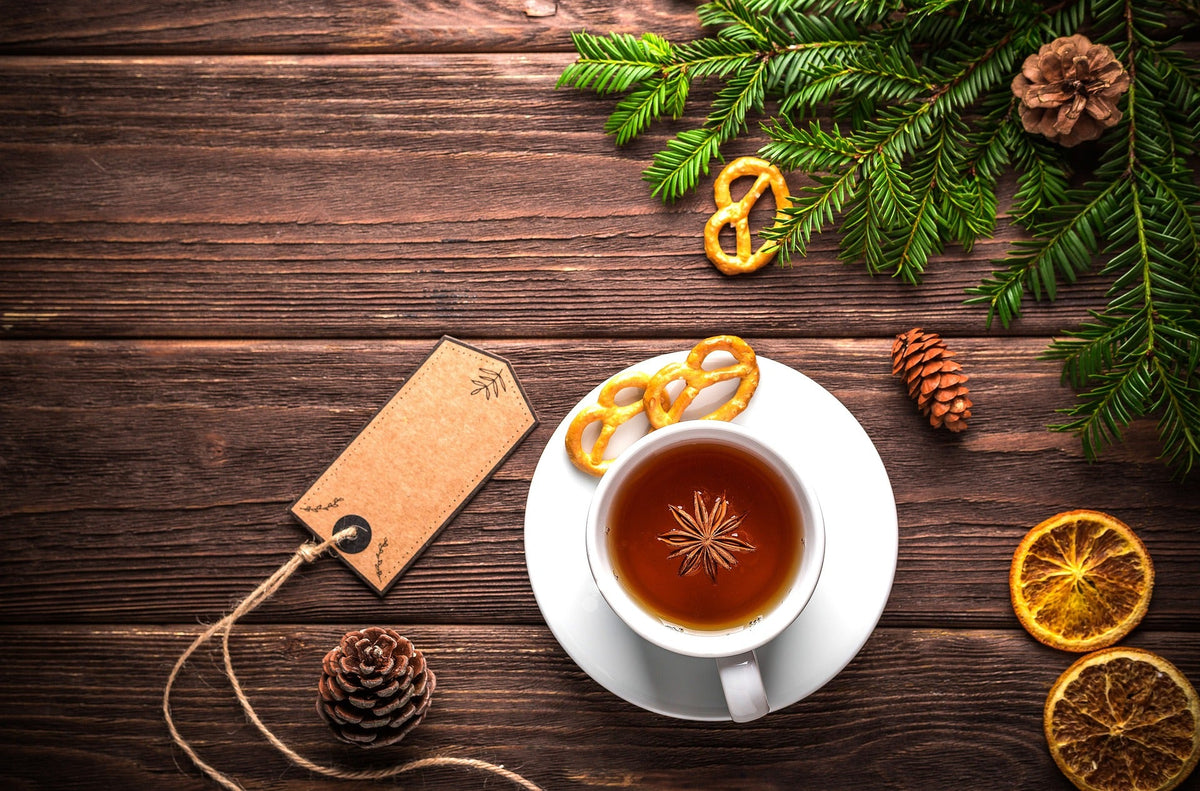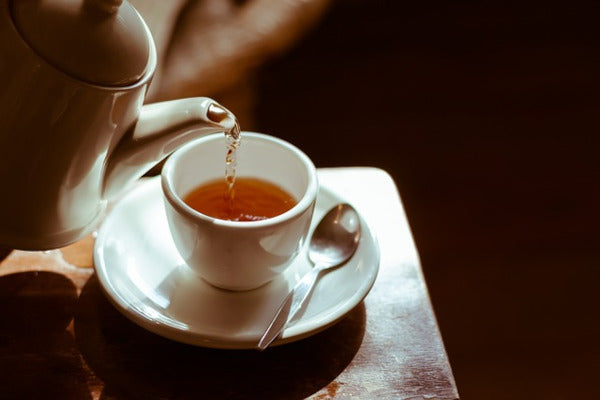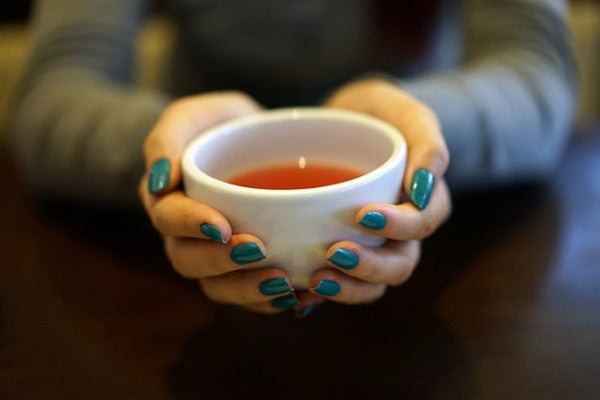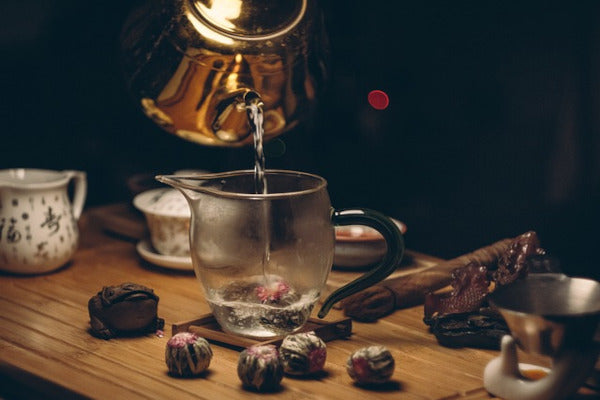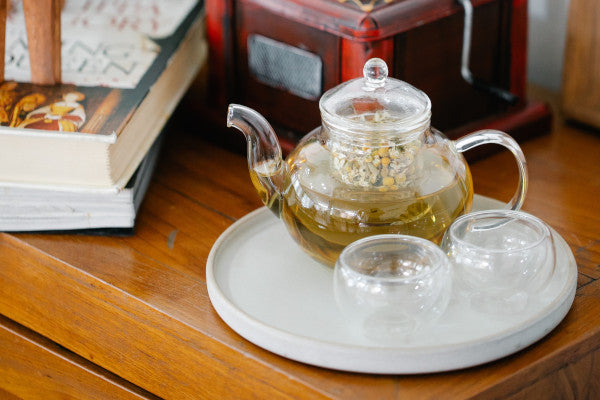Still haven't heard of Tétique Natural Honeybush Infusion? Keep reading this post and you'll learn all about it. It's a delicious and very healthy infusion that you can enjoy as a healthy natural beverage.
What is Honeybush?
The honeybush (or Heuningbos in Afrikaans) is a shrub plant native to South Africa. It grows wild on the slopes and mountainous escarpments of the coastal region of South Africa, specifically around the Cape of Good Hope.
The Honey Bush begins to bloom bright yellow in spring and the flowers have a light honey scent and aroma, which is why this plant was named honey bush.
International interest in honeybush tea began with the trading activity of Dutch-British companies in the Cape of South Africa, as they primarily traded in tea from India and spices from Southeast Asia, and not long after, botanists began cataloging the Cape's rich flora.

Thus, Honeybush was first mentioned in botanical records in 1705, and soon after, people began using the plant as a tea substitute, probably as a result of observations made by local people.
In the late 19th century, honeybush tea was listed in a U.S. Food and Drug Directory. Native Africans in the Cape used the tea to cure cough symptoms and for the treatment of upper respiratory infectious diseases.
The leaves of the honeybush are commonly used to make herbal teas. It grows only in small areas in the southwest and southeast of South Africa and has many similarities to rooibos tea . The reason it's called honeybush is because the flowers smell like honey, and the flavor of honeybush is similar to rooibos, but slightly sweeter.
In some rural regions of South Africa, it used to be common practice to keep a pot of honeybush tea on the stove, ready to drink while leaving the whole house smelling of honeybush.

One of the biggest differences with tea is that it comes from Camellia sinensis , and honeybush doesn't become bitter over long periods of infusion. Some species can be cultivated, while others have resisted all attempts at cultivation and must be collected from wild regions.
Mountain Tea is one of the teas harvested in the Kouga Mountains, where it grows naturally. Mountain Tea regenerates within three years after harvest or after being devastated by fire. Field rotation is practiced, so less than a third of the mountain is available for harvest each year.
Mountain and valley teas bloom from September to October, while coastal tea blooms from May to June. There are two methods of processing honeybush for use in tea. One is the traditional method, which involves harvesting the bush's leaves, cutting them and grinding them (often with mechanical rollers), then exposing them to the sun for a period of time to oxidize.

The modern, industrialized process does not allow the leaves to oxidize in the sun, but rather in tanks heated to temperatures of 70-90°C for two to three days. The leaves are air-dried and then sieved and classified into:
- Super Fine (mainly used for tea bags)
- Regular (mostly used for floating tea bags or loose tea application)
- Rough (mainly used for loose tea)
How to prepare a Honeybush
Loose honeybush tea is best brewed over low heat for ten minutes in a pot of water on the stovetop. Boiling increases the tea's antioxidant value, flavor, and color, and (luckily) the tea never becomes bitter.
Honeybush can also be made in a teapot and then poured through a tea filter or by using a tea ball. Use 1 teaspoon of tea leaves or a tea bag per cup. Children love honeybush with milk and honey, and it's also a relaxing bedtime favorite for every member of the family. It can also be combined with other ingredients to make a more delicious honeybush tea .
Properties of Honeybush
Despite some attempts so far, not all varieties of wild honeybush have been cultivated. Consequently, the plant is harvested directly from the mountains and, due to its hardiness, requires no pesticides or fertilizers and therefore leaves no residue.
People benefit from nutrients Honeybush tea contains vitamin C and other minerals like magnesium, calcium, and potassium, as well as trace elements like manganese, zinc, iron, phosphorus, boron, and copper. Also important are isoflavones and flavonoids with antioxidant activity. Honeybush tea contains less than 0.45 percent tannins and is virtually calorie-free.
The flavor and color of Honeybush tea

The taste of honeybush tea is similar to Rooibos tea, however, it is slightly sweeter, the honey color of the tea is pleasant to drink and could be described as bright copper-gold and naturally has a mild sweet taste and therefore does not necessarily need to be sweetened, as it contains pinitol, a slightly modified sugar.
Honeybush for a good night's sleep
Honeybush tea is caffeine-free (unlike coffee) and is therefore easy to digest, even for children, and can be used as an iced tea and is suitable for evening consumption.
Honeybush Tea and Health
The benefits of honeybush tea are numerous. The tea has a hypoglycemic effect and can enhance insulin action. It also contains flavones and isoflavones, which are similar to those found in soy and can alleviate symptoms that occur during menopause.
Honeybush staves off hunger pangs and reduces water retention, containing antioxidants that slow the aging process. It is also believed in South Africa to prevent cancer and fungal infections, although there are no studies extensive enough to scientifically prove this. It also helps with allergies, indigestion, and sunburn, and even stimulates milk production in nursing mothers. Therefore, honeybush is recommended during pregnancy.
Benefits of Natural Honeybush Tea
- Quenches thirst: Honeybush tea quenches thirst due to its sweet, cool flavor and it also has a delicious taste.
- Immune system: The antioxidants contained ensure a good immune system and thus prevent infectious diseases.
- Colds, respiratory illnesses, and asthma: The antibacterial components of honeybush tea help fight colds. The tea is an expectorant and also suitable for mucus caused by allergies.
- Stomach and digestive disorders: Helps control nausea, constipation, and bloating. Honeybush is especially easy to digest, as it has a low tannic acid content and is caffeine-free.
- Tissue damage and cancer: Free radicals are harmless thanks to the antioxidants contained in tea, tissues, skin and blood vessels are protected.
- Germ protection: A subclass of flavonoids, flavones, have an anti-inflammatory effect and protect against fungi.
- Hypertension: Sodium and potassium have a regulatory effect on blood pressure and water balance in cells.
- Cravings: Its sweet taste satisfies the sudden desire to eat sweets, and helps to lose weight or maintain weight.
- Uterine Problems: Warm tea and its soothing ingredients work antispasmodically on the uterus.
- Skin: Honeybush is due to its zinc content and antioxidants, which has a very positive effect on the skin.
- Bones and Teeth: Honeybush contains calcium and magnesium, which are necessary for healthy, strong bones and teeth.
If you own a coffee shop or restaurant, a great option to offer your customers is Honeybush tea. This tea, native to South Africa, is known for its smooth honey flavor and sweet, earthy aroma.
Furthermore, if you're looking for a supplier of quality teas and infusions in Spain, Tetique is the perfect choice. With a wide variety of high-quality, natural products, Tetique has become the leading supplier of teas and infusions in Spain.
Offering your customers a cup of Tetique Honeybush Tea will not only allow them to enjoy a unique flavor experience, but will also give them the peace of mind of knowing they're enjoying a superior beverage. Take this opportunity to add a special touch to your menu and surprise your customers with a Tetique tea.


